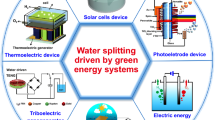Abstract
A novel process for decolorization of Acid Orange 7 (AO7) dye wastewater by dielectric barrier discharge plasma coupled with persulfate (PS) was investigated, and the enhancing performance of PS on the AO7 decolorization efficiency and energy efficiency were examined under different molar ratio of AO7 to PS (MR), gas discharge gap, initial concentration of AO7 and gas discharge atmosphere. The experimental results indicate that the decolorization efficiency (ƞ) and the energy efficiency (γ) increased with the addition dosage of PS until the MR of 1:100, and an increment in the decolorization efficiency and energy efficiency reached 60.5% and 0.33 g/(kW h) respectively at an MR of 1:100. An increase in the gas discharge gap and in the initial concentration of AO7 greatly decreased the decolorization efficiency of AO7, but the increment in energy efficiency due to PS addition increased with the AO7 initial concentration and discharge gap except for the discharge gap of 8 mm, and the highest increment in energy efficiency of 0.75 g/(kW h) was obtained at a gas discharge gap of 6 mm and an initial concentration of 30 mg/L. Moreover, higher AO7 decolorization efficiency was achieved in air than in Ar atmosphere, while the increment in decolorization efficiency and energy efficiency due to PS addition was not influenced by the gas discharge atmosphere. The experimental results imply that PS was activated into stronger radical species such as sulfate radical and hydroxyl radical, which contributed to a higher decolorization performance. The possible motivator of PS was tentatively concluded as UV irradiation, Joule heating effect, etc.









Similar content being viewed by others
References
Li W, Sheng G, Zeng RJ et al (2012) China’s wastewater discharge standards in urbanization. Environ Sci Pollut Res 19:1422–1431
Martínez-Huitle CA, Brillas E (2009) Decontamination of wastewaters containing synthetic organic dyes by electrochemical methods: a general review. Appl Catal B 87:105–145
Raghu S, Ahmed BC, Hazard MJ (2007) Chemical or electrochemical techniques, followed by ion exchange, for recycle of textile dye wastewater. J Hazard Mater 149:324–330
Masoud RA, Haroun AA, El-Sayed NH (2006) Dyeing of chrome tanned collagen modified by in situ grafting with 2-EHA and MAC. Appl Polym Sci 101:174–179
Chaudhuri S, Ray K, Chaudhuri UR et al (2004) Purification of natural food colourants using membrane technology—a review. J Food Sci Technol 41:1–8
Hildenbrand S, Schmahl FW, Wodarz R et al (1999) Azo dyes and carcinogenic aromatic amines in cell cultures. Int Arch Occup Environ Health 72:52–56
Konstantinou IK, Albanis TA (2004) TiO2-assisted photocatalytic degradation of azo dyes in aqueous solution: kinetic and mechanistic investigations—a review. Appl Catal B 49:1–14
Oturan MA, Aaron JJ (2014) Advanced oxidation processes in water/wastewater treatment: principles and applications. A review. Cri Rev Environ Sci Technol 44:2577–2641
Stylidi M, Kondarides DI, Verykios XE (2004) Visible light-induced photocatalytic degradation of Acid Orange 7 in aqueous TiO2 suspensions. Appl Catal B 47:189–201
Sampa C, Binay KD (2004) Photocatalytic degradation of model textile dyes in wastewater using ZnO as semiconductor catalyst. J Hazard Mater 112:269–278
Zheng Q, Dai Y, Han X (2016) Decolorization of azo dye CI reactive black 5 by ozonation in aqueous solution: influencing factors, degradation products, reaction pathway and toxicity assessment. Water Sci Technol 73:1500–1510
Lucas MS, Peres JA (2006) Decolorization of the azo dye reactive black 5 by Fenton and photo-Fenton oxidation. Dyes Pigm 71:236–244
Zheng H, Guo Y, Zhu H et al (2013) p-nitrophenol enhanced degradation in high-voltage pulsed corona discharges combined with ozone system. Plasma Chem Plasma Process 33:1053–1062
Hao XL, Zhang XW, Lei LC (2009) Degradation characteristics of toxic contaminant with modified activated carbons in aqueous pulsed discharge plasma process. Carbon 47:153–161
Aggelopoulos CA (2016) Atmospheric pressure dielectric barrier discharge for the remediation of soil contaminated by organic pollutants. Int J Environ Sci Technol 13:1731–1740
Wilmarth WK, Haim A (1962) In: Edwards JO (ed) Peroxide reaction mechanisms, Interscience, New York
Nosov EF (1966) Rate constant determination in the decomposition of potassium and ammonium peroxydisulfate in aqueous solution. Russ J Phys Chem 40:1571–1572
Dogliotti L, Hayon E (1967) Flash photolysis of persulfate ions in aqueous solutions. Study of the sulfate and ozonide radical anions. J Phys Chem 71:2511–2516
Tanner DD, Osman SAA (1987) Oxidative decarbonation on the mechanism of potassium persulfate promoted decarbonation reaction. J Org Chem 52:4689–4693
Berlin AA (1986) Kinetics of radical-chain decomposition of persulfate in aqueous solutions of organic compounds. Kinet Catal 27:34–39
Kuchenbecker M, Bibinov N, Kaemlimg A et al (2009) Characterization of DBD plasma source for biomedical applications. J Phys D 42:045212
Wu J, Zhang H, Qiu JJ (2012) Degradation of ACID Orange 7 in aqueous solution by a novel electro/Fe2+/peroxydisulfate process. J Hazard Mater 215:138–145
Hori H, Yamamoto A, Hayakawa E et al (2005) Efficient decomposition of environmentally persistent perfluorocarboxylic acids by use of persulfate as a photochemical oxidant. Environ Sci Technol 39:2383–2388
Neamtu M, Yediler A, Siminiceanu I et al (2004) Decolorization of disperse red 354 azo dye in water by several oxidation processes—a comparative study. Dyes Pigment 60:61–68
Sarani A, Nikiforov AY, Leys C (2010) Atmospheric pressure plasma jet in Ar and Ar/H2O mixtures: optical emission spectroscopy and temperature measurements. Phys Plasmas 17: 063–504
Olmez-Hanci T, Arslan-Alaton I (2013) Comparison of sulfate and hydroxyl radical based advanced oxidation of phenol. Chem Eng J 224:10–16
Acknowledgements
This research is supported by National Natural Science Foundation of China (Grant No. 21577011) and the Fundamental Research Funds for the Central Universities (Grant No. DUT15QY23).
Author information
Authors and Affiliations
Corresponding author
Rights and permissions
About this article
Cite this article
Shang, K., Wang, X., Li, J. et al. Effect of Persulfate on the Degradation of Acid Orange 7 (AO7) by Dielectric Barrier Discharge Plasma. Top Catal 60, 973–979 (2017). https://doi.org/10.1007/s11244-017-0762-8
Published:
Issue Date:
DOI: https://doi.org/10.1007/s11244-017-0762-8




